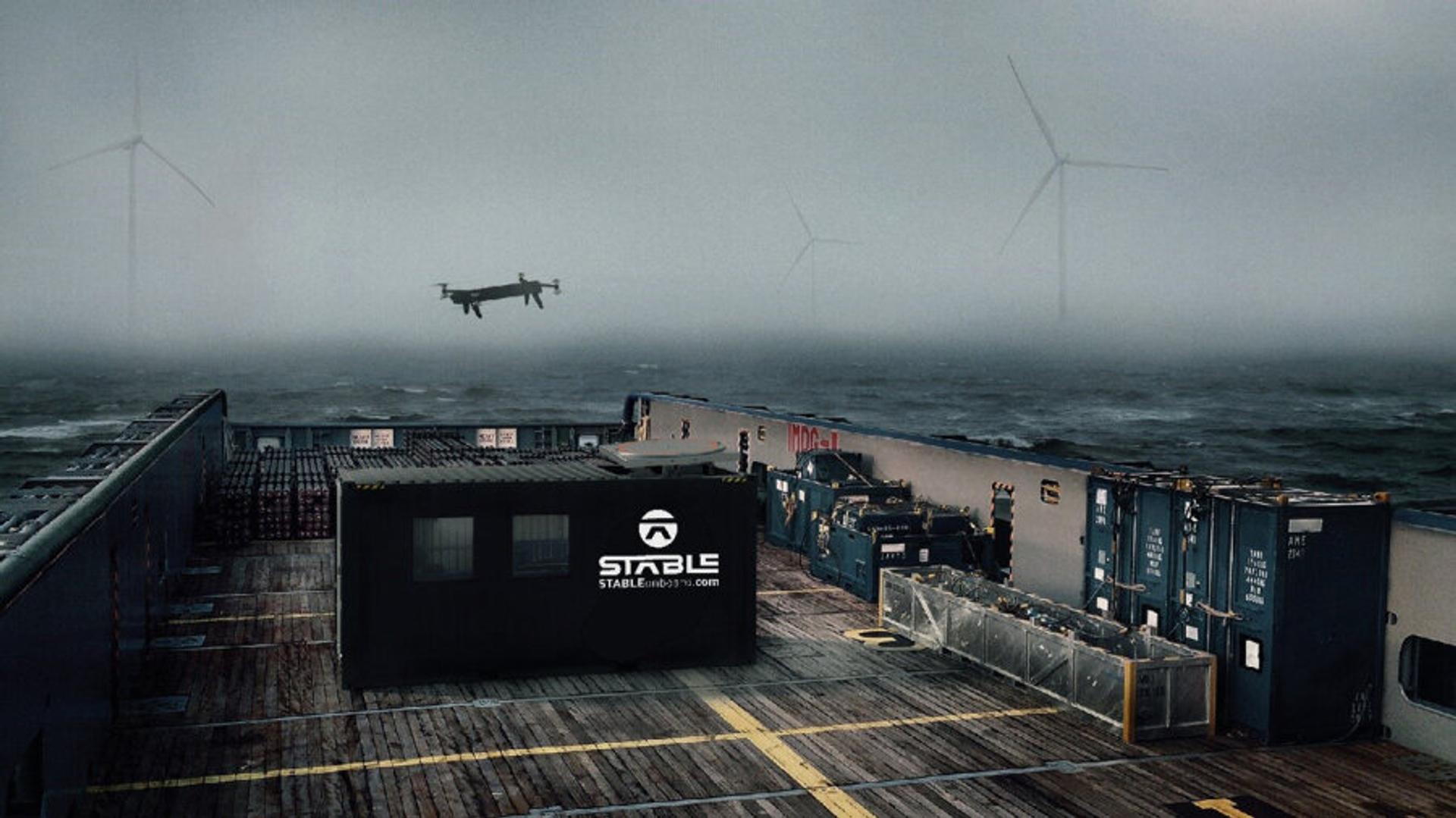Using drones for offshore wind turbine inspection

Traditional wind turbine inspection methods
Wind turbines require regular checks to identify wear, blade damage and structural defects. Conventional inspections rely on rope access technicians who climb the turbines using harnesses and tethers to carry out knock tests and visual examinations. However, manual inspections involve safety risks, cause turbines to be offline for hours and don’t always detect internal or subtle defects.
How do drones facilitate offshore wind turbine inspection?
Drones are revolutionising wind turbine inspections. Offshore drones equipped with high-resolution cameras and LiDAR sensors scan the turbine’s exterior. These sensors create 3D maps and geolocate defects such as blade delamination, lightning damage and corrosion. Specialised drones navigate inside the turbine’s blade chambers, capturing detailed imagery of areas that would otherwise be inaccessible.
What are the benefits of wind turbine drone inspections?
Drone inspections offer many advantages, especially in offshore environments.
Enhanced safety
Technicians avoid dangerous tasks, such as climbing turbines and enduring harsh weather conditions.
Increased efficiency
Inspections that previously took hours or days can be completed within minutes, minimising turbine downtime.
Cost reduction
Lower labour and equipment costs make drone inspections more economical than traditional methods.
Improved data quality
High-resolution imagery and sensor data provide detailed insights into turbine conditions.
Versatility
Offshore drones can operate under a range of weather conditions, ensuring consistent performance.
What requirements are there for wind turbine inspection drones?
Drones used for wind turbine inspections must meet specific requirements to perform effectively.
Long battery life
Drones must be able to inspect large turbines and multiple units without frequent recharging.
Autonomous navigation
Drones must be equipped with obstacle-avoidance systems to operate safely around complex turbine structures.
Durability
Offshore drones must be able to withstand harsh environmental conditions, including saltwater corrosion and high winds.
Recent advancements in drone technology
The latest drone solutions use AI, deep learning and advanced sensors to conduct fully automated inspections. The AQUADA-GO innovation project, for example, combines AI and thermal-mechanical modelling to detect blade damage with unprecedented accuracy while turbines are still in motion.
The FOD4Wind project focuses on drones launched from service operation vessels (SOVs) equipped with charging stations. These offshore drones can transport tools and spare parts directly to turbines, streamlining both inspection and maintenance tasks. Such innovations demonstrate the growing role of drones in optimising renewable energy infrastructure and accelerating the transition to green energy.
